Note: This article is out of date, and must be updated with the latest regulatory guidelines. The FDA does not accept it as a dietary supplement ingredient, as it was not sold as one before 1994 and has never had an acknowledged NDIN (New Dietary Ingredient Notification) per DSHEA 1994.
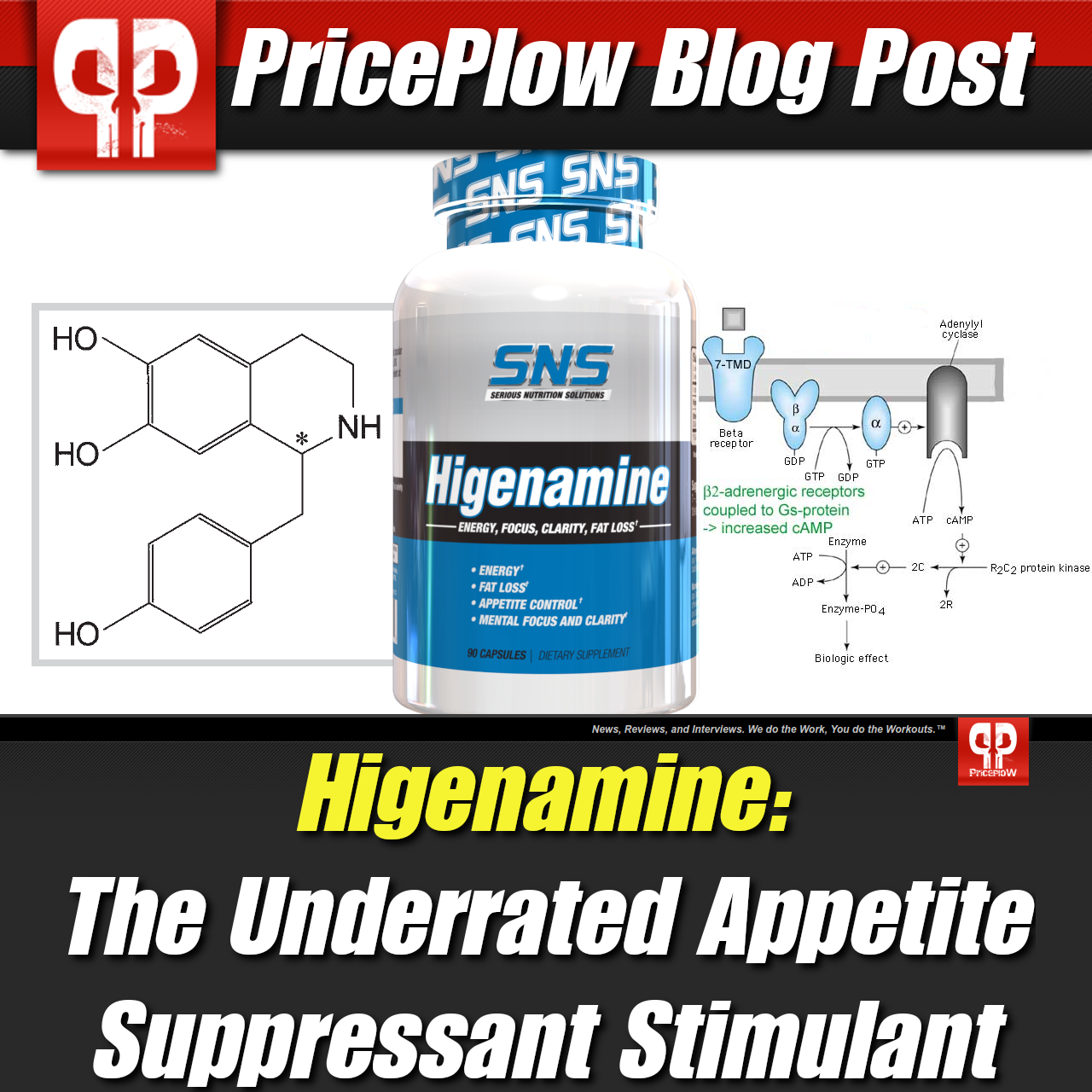
Higenamine is a stimulant that we feel reduces appetite enough that dieters should investigate more!
Our society is consistently focused on two things: high energy levels and fat loss. In fact, supplements that claim to aid in either (or both) of these departments are the best-selling products in the industry. In order to differentiate themselves from the competition, companies are constantly searching for alternative ingredients to strengthen their formulas and deliver better results.
Among ingredients that are currently growing in popularity, higenamine had made quite the name for itself. Citing potential uses for energy, focus, fat loss, and appetite control, this ingredient seems to be appropriate for this day and age.
In this post, we are going to tell you all there is to know about higenamine: what it is, what it could be used for, and its safety. Read on to find out what this stuff is, and whether you should consider including it in your supplement arsenal!
TL;DR
- Higenamine is a stimulant that behaves like a mild form of ephedrine or synephrine (it is a beta-2 adrenergic agonist).
- It can increase circulating free fatty acids and energy expenditure, making it popular in fat burning supplements. Anecdotally, it has an appetite suppressant effect.
- Drug-tested athletes beware - higenamine is banned for sport by the World Anti-Doping Agency because it's a bronchodilator and potential performance enhancer
- Dosage: Higenamine is typically dosed between 25 and 75mg. (see the dosage section)
- It stacks well with caffeine (or coffee), yohimbine, choline, and L-carnitine for weight loss.
- For focus, it stacks well with caffeine, choline, and acetyl L-carnitine. (see the stacking section)
- Safety: While there are risks with any beta-2 adrenergic agonist stimulant, it has a safer profile than ephedrine and synephrine.
Higenamine - what can it do?
Also sometimes known as norcoclaurine, Higenamine is a benzyltetrahydroisoquinoline, which means it's an organic compound possessing a variety of bioactive properties commonly used in drugs. Specifically, benzyl tetrahydroisoquinolines are used to manufacture painkillers, such as aspirin.
This specific chemical is found in several plants, most notably Nandina domestica, a Japanese root known as sacred bamboo.[1] Derived from the extracted ethanol of these plants, higenamine accounts for the majority of the medicinal properties of its source plant.[1] It is because of these medicinal uses that the bamboo plant was dubbed "sacred" (on that note, you'll also find it in the Nelumbo Nucifera flower, also known as the Sacred Lotus). What properties garner such a nickname?
Higenamine's effects on the body
Higenamine has been shown to mediate cardiotonic, vascular relaxation, and bronchodilator effects.[2] In other words, it seems to have anti-asthmatic effects, evoking beta(2)-adrenergic receptors throughout the body. These receptors are responsible for relaxing (or dilating) the eyes, arterioles, lungs, in addition to the bodily functions each of these organs regulate.[3] When higenamine interacts with these receptors, it triggers bronchial dilation, widening the bronchi to ease breathing.[1]
It also stimulates cardiac adrenoceptors, increasing contractions within the heart, thus increasing heart rate.[4]
Similar to ephedrine / synephrine
Because higenamine acts as a beta(2)-adrenergic receptor agonist, it's extremely similar to ephedrine and synephrine. Ephedrine, derived from a plant named Ephedra sinica,[5] and synephrine (commonly known as bitter orange)[6] both hail from ancient Chinese medicine. Historically, they've been used to treat numerous ailments, such as coughing, allergies, asthma, and the flu.[7]
Ephedrine has primarily been used for its potential fat-burning properties. Research has suggested that it may enhance short-term fat loss,[8] as well as potentially blunt appetite.[9] Scientists have also found that the compound works synergistically with caffeine, and fat-burning effects are maximized when using both of them.[10] There have also been claims of boosts in strength and power, but little research has proven those effects.
It's imperative to note that using both ephedrine and synephrine have been deemed dangerous by multiple sources, at least a high enough doses. Ephedrine and caffeine both significantly increase heart rate, potentially to alarming levels.[8] Because of this, ephedrine has built quite a nasty reputation, although we don't buy into that as much. There have been numerous reported cases where poorly-extracted ephedra supplements caused negative effects, which is why ephedrine alkaloids were banned for sale as supplements by the FDA in 2004.[11]
Similarly, synephrine has been shown to increase metabolic rate, increasing energy expenditure.[12] However, studies have suggested that more research be conducted before cementing the chemical's status as a potent fat-burner.
Again, higenamine is chemically similar to both ephedrine and synephrine. Thus, science suggests that it should function in the body similarly, but higenamine's profile seems to be much safer thus far. So, what exactly has higenamine been shown to do, and should you use it?
Fat-burning potential
The majority of the potential uses for higenamine lie in the fat-burning realm. Because it acts as a beta(2)-adrenergic receptor agonist, it's believed to act similarly to other agonists, such as ephedrine discussed above.
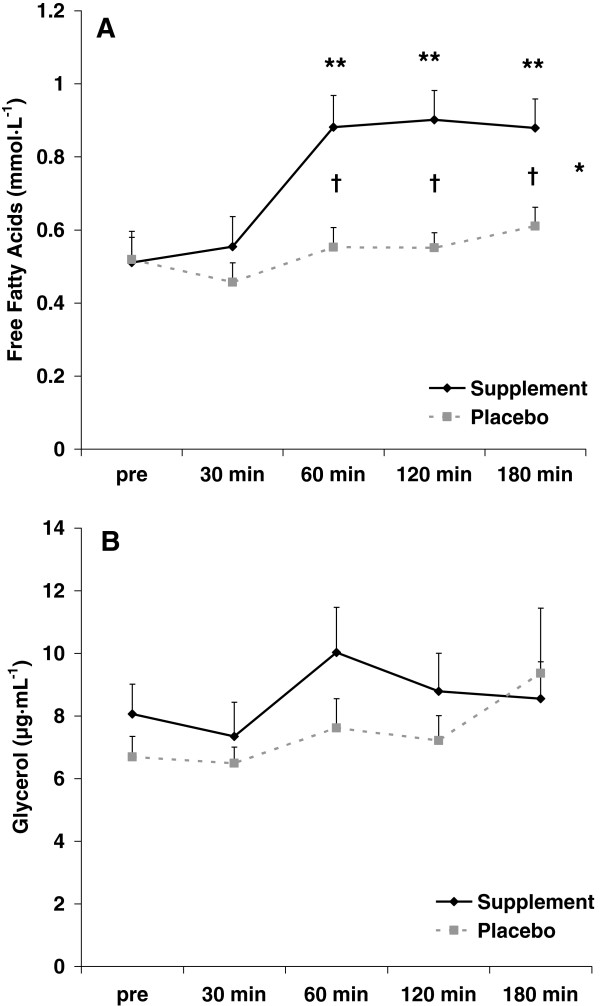
A higenamine-based supplement (with caffeine and yohimbe) increases plasma free fatty and glycerol for at least a few hours[13]
When used in conjunction with other metabolic-enhancing compounds, such as caffeine, higenamine is highly effective. In one double-blind, random study funded by USPlabs at the University of Memphis, individuals given a stimulant supplement were compared to placebo. The stimulant supplement contained a blend of higenamine, 270mg of caffeine, and yohimbe bark extract, so there are some potential confounds here, but they're realistic in terms of what users ultimately supplement.
The study showed that "when combined with caffeine and yohimbe bark extract, higenamine increases both lipolysis and energy expenditure, as evidenced by a significant increase in circulation free fatty acids and kilocalories".[13] Individuals ingesting the supplement had higher levels of free fatty acids, meaning their bodies were better primed to burn fat. Coincidentally, their bodies also burned more calories than the placebo group.
This research also compared heart rates and systolic blood pressure between the two groups, reporting higher values for the supplement group.[13] Although they were unsure of the individual effect of each ingredient, these researchers concluded that "a higenamine-based dietary supplement stimulates lipolysis and energy expenditure" in healthy subjects.[13]
Again, that's what happens when stacked with yohimbe and caffeine, but that's what's requently used -- and caffeine alone doesn't bring a ton of extra lipolysis and energy expenditure (although it does bring some).
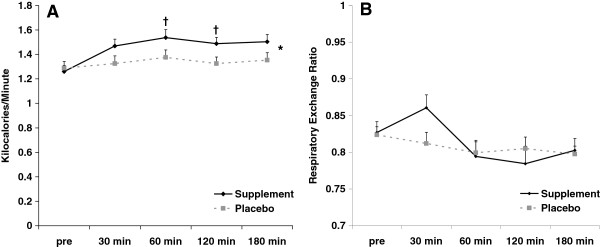
Higenamine, yohimbe, and caffeine also increased kilocalorie expenditure (A) and respiratory exchange ratio (B).[13]
Does it help with training at all? Maybe... it's banned by WADA for a reason!
Although there isn't much research done specifically to show how higenamine may aid you in your training, there may be some promise. Because the aforementioned study showed an increase in calories burned (due to the higher levels of free fatty acids), you theoretically have more energy to expend. Because your "caloric tank" is slightly larger and there will be more circulating fatty acids that have been oxidized available for use, you have more energy available to train. This, in turn, could lead to better, more efficient workouts.
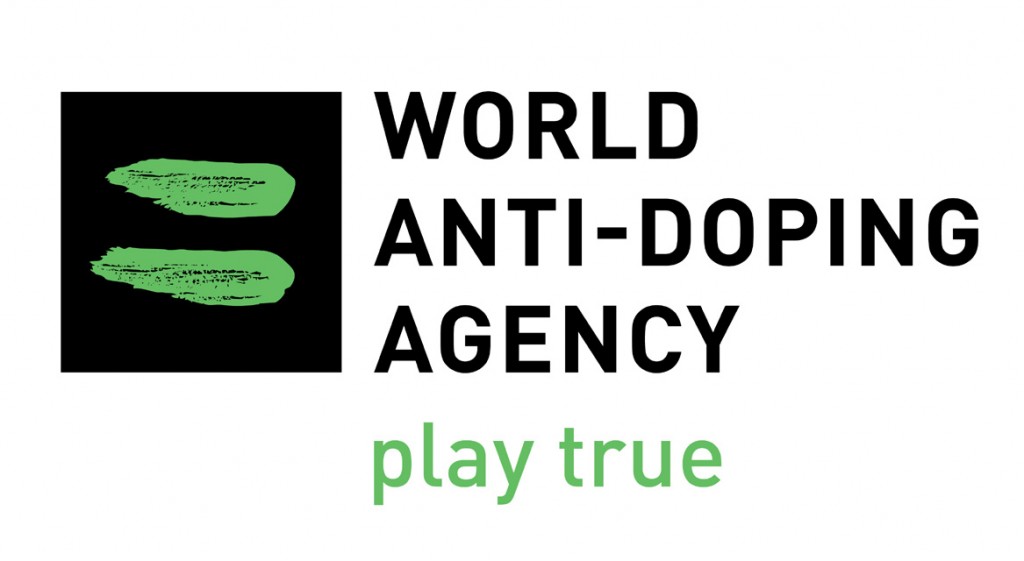
Banned because it works! Drug-tested athletes shouldn't take the risk. This ingredient is legal, but that doesn't meant it's okay for drug-tested athletes!
In addition, higenamine may increase endurance due to its cardiovascular effects. Higenamine expands your bronchi and increases your heart rate. This could potentially help boost endurance, especially in cardiovascular training such as running. This is likely why it's been banned for use in drug-tested athletes by WADA, the World Anti-Doping Agency.[14]
Increased acetylcholine: the learning and mind-muscle neurotransmitter
One interesting study showed that higenamine increases acetylcholine release, by way of activation of the beta(2)-adrenergic receptor.[15] Acetylcholine, as we know, is a neurotransmitter that helps send signals to muscles throughout the body. It's excellent for building the mind-muscle connection during training, so any time we can enhance that process, we are all for it! But before we go claiming that higenamine is a potent acetylcholine booster, we would love to see other research show similar results.
Possible appetite suppression?
While no research exists showing how higenamine affects appetite, scientists hypothesize it may inhibit hunger. Anecdotally, it seems to work quite well when paired with caffeine during a fast. Perhaps the increased number of circulating free fatty acids give the body something to "chew on" and appetite goes down simply from a caloric accounting standpoint - or perhaps there's more to these effects than that. Again, since higenamine's chemically akin to ephedrine (which blunts appetite), we're not surprised that higenamine might do the same. Still, we would prefer to see some concrete evidence before suggesting this!
Some peripheral antioxidant & anti-inflammatory benefits
Outside of its fat-burning potential, higenamine may have some additional uses. Studies have shown potential benefits in treating chronic inflammation and ischemia, as well as showing antioxidative properties:
Reducing Inflammation via nitric oxide synthase inhibition?
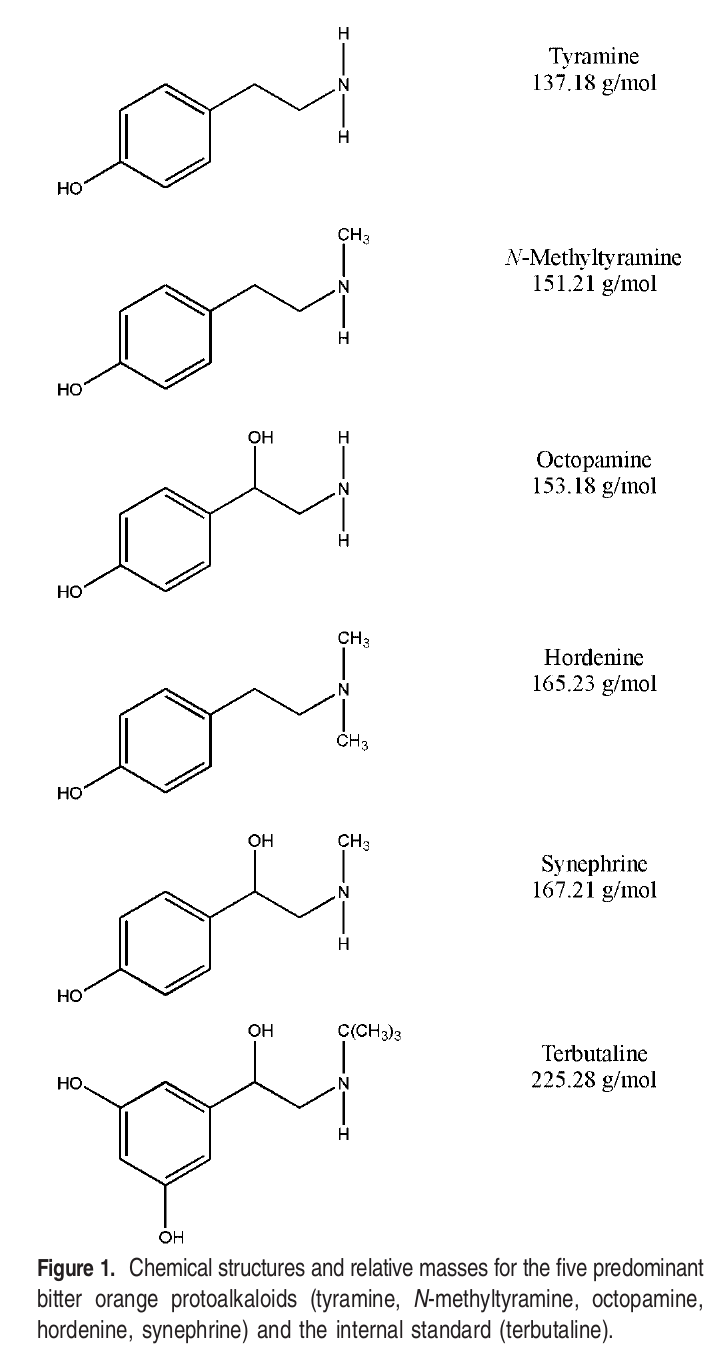
Some related-but-different "competing" stimulants from the bitter orange plant,[6] now that ephedrine is banned in supplements.
Higenamine may possibly inhibit nitric oxide levels with respect to inflammation (thus higenamine may act as an anti-inflammatory agent).[16] In a study conducted on mice, higenamine prevented inducible NO synthase (iNOS), one of the key factors in NO production.[17] While some of us tend to take supplements that deliberately boost NO production (for the "pump" in training), some people do look to lower NO levels to reduce inflammation. As it turns out, higenamine may be useful there.
Note that nobody we've talked to has ever experienced this when using higenamine in a nitric oxide pump supplement. For those using nitric oxide enhancing compounds (such as citrulline or nitrate), its highly doubtful that higenamine would overrule any of their effects. It may just be useful as an anti-inflammatory for people avoiding nitric oxide enhancing compounds and trying to reduce inflammation.
Brain injury and inflammation
One study published in 2012 tested higenamine as a capable treatment for brain injury. These scientists wanted to see if higenamine could induce heme oxygenase-1 (HO-1), which can help decrease inflammation in the brain. Conducted in vivo, the researchers found that the chemical protects brains cells against hypoxic damage through up-regulation of HO-1.[18] Thus, the study concluded that higenamine may be useful in treating hypoxia-induced brain injury, such as the kind incurred after a stroke.[18]
Promotes cellular health
Higenamine may be relevant in inhibiting cell apoptosis. In one 2017 study, higenamine was shown to preserve gastric smooth muscle cells in mice with diabetic gastroparesis.[19] This disease tends to attack these cells, but higenamine (through the beta(2)-adrenergic receptor pathway) was actually able to help keep gastric smooth muscle cells alive.
Potential uses for erectile dysfunction?!
Erectile dysfunction, whether men want to admit it or not, is very much a relevant issue some of us deal with. While we believe in focusing on low-carb / high-fat diet alongside exercise first, some medications do exist, but more remedies to test are always welcome. Turns out that higenamine may have some benefits for those with this issue!
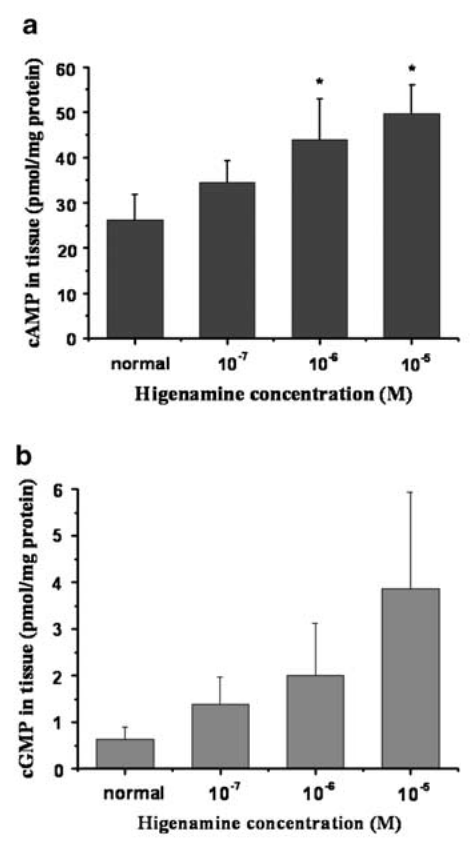
Effects of higenamine on (a) cAMP and (b) cGMP in the rat CC (corpus cavernosum). The concentrations of cAMP and cGMP in the CC increased in
response to higenamine in a dose-dependent manner, but cGMP had no statistical significance.[2]
Animal models have shown that it increased concentrations of cAMP and cGMP in the corpus cavernosum (erectile tissue area) in a dose-dependent manner, but cGMP had no statistical significance.[2]
To follow up on that data, a study conducted in South Korea, published in 2012, looked into higenamine and if it may help treat erectile dysfunction. They used higenamine on the rat corpus cavernosum to investigate its effect on penile erection. In pre-contracted subjects, scientists found that higenamine induced significant relaxation, compared to subjects that didn't receive the substance.[20] They concluded that higenamine, when dosed effectively, may hold value in treating erectile dysfunction.[20]
While higenamine does have other tangential effects, it seems to be best suited as both a fat-loss aid and an effective treatment for breathing issues, such as asthma. However, it is worth noting that many of the alleged benefits tend to be drawn from the substance's chemical structure. In other words, people seem to believe ephedrine and higenamine should do the same things within the body. Although some research has shown potential for treating obesity or asthma, there just isn't any validation of the other claims. We would love to see more research before we believe it!
Safety
First, let's talk about the WADA ban, which all athletes must immediately understand. Although sold in various supplement formulas, higenamine was recently banned by the World Anti-Doping Agency (WADA) in 2017.[14]
The question is, was it banned because it's a bronchodilator and thus a performance-enhancer? Or due to safety issues? We believe the former, which is often a bigger concern to drug-testing organizations that are trying to level the playing field.
But to investigate, what may be unsafe about it, and has it ever been shown to be unsafe when used orally like we do with supplements?
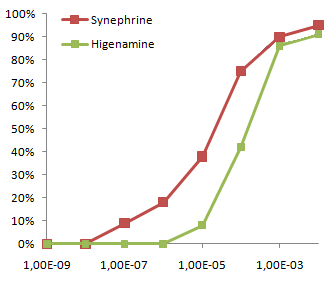
Higenamine activates beta-2 adrenoreceptors nearly as well as synephrine, but has less side effects.[21,22]
The good news is that when comparing against the effects of synephrine, higenamine is less potent on a milligram by milligram basis[21,22] - and they're often dosed about the same.
Should we consider intravenous research?
People who have been treated with intravenous higenamine have cited heart palpitations, dizziness, and chest tightness.[23] Similar effects were experienced on patients with coronary heart disease,[24] but it's obviously never recommended that such individuals use any stimulants.
Meanwhile, many of those same cases have been reported with other stimulants, such as caffeine. So, why has it developed a negative stigma?
Remember how many of the suggested uses of higenamine were related to its similarities with ephedrine? Well, ephedrine was banned by the FDA in 2004 for "causing strokes and heart attacks."[25] Due to their close relationship, many are afraid that higenamine may cause similar adverse effects. Fortunately, we've seen absolutely nothing like that.
The reason why caffeine is viewed in such a better light is due to the knowledge we have on it. Science hasn't really been able to show agreed-upon safe dosages of higenamine, whereas there are safe suggestions for caffeine intake. Because we understand caffeine potency, we can determine what dosages are safe for each individual.
Regarding dosage
But when it comes to ingredient safety, doses aren't "regulated". It's either legal or not legal as a supplement, and companies can use as much as they want, which is really only an issue because no one knows with certainty what's safe. Supplements range from 2.5mg to over 100mg daily dosages,[25] so it seems that the market is keeping it reasonable.
All that being said, we really don't see much of a difference between higenamine and other stimulants. As is the case with caffeine, be careful and start light to assess dosage (which is discussed in the next section). Know your limits and be smart about what you're putting in your body. Taking too much of any stimulatory compound can be a problem, and higenamine is no different.
In terms of starting light, see next section:
Dosage
The doses range, but the standard go-to dose usually starts at 25-50mg, and we rarely see it go above 75mg.
In the international medical world, it's used in Japan as a bronchodilator at a dose between 2-4mg.[26] However, most higenamine supplements provide 30mg. We think this would be a great level to start at, and you can responsibly adjust your intake with a second capsule from there!
As previously stated, higenamine is a stimulant, and should be taken as such. Everyone's tolerance with something like caffeine is different, as one person may be able to tolerate 60mg compared to another only using 30mg. It's imperative that you understand your body, and make responsible decisions.
Stacking
Although the study from the University of Memphis did not disclose the amount of higenamine used in their research, their results were encouraging. Test subjects essentially stacked higenamine with caffeine and yohimbe bark extract and saw higher levels of fat-burning.[13] If you do decide to use higenamine, this research does suggest using caffeine and/or yohimbe bark extract, as well! The most pure form of yohimbe is yohimbine HCl, and you can start at 1.5mg and work up to assess dose. The caffeine can be anywhere from 100-300mg.
-
For fat-loss: Caffeine, Yohimbine, and Carnitine
Given that more free fatty acids are circulating, we think that L-Carnitine supplementation -- especially for those who don't eat a ton of meat -- would be wise. Carnitine aids in fatty acid transport, which may be the exact thing needed to pair with higenamine. It helps your mitochondria convert those fatty acids into readily-available energy, making total synergistic sense here. Using the two together should only amplify your body's use of stored fat for energy!
-
For focus: Caffeine, Choline, and Acetyl L-Carnitine
We also think other focus nootropics, such as choline bitartrate or alpha-GPC, would be advantageous stacking options. Choline is fantastic and synergistic with carnitine for fatty acid oxidation as well. If you decide to stack higenamine with some caffeine before a workout, tossing in some focus ingredients would be a smart move!
In the case of chasing focus, the best form of L-Carnitine to use is Acetyl L-Carnitine (ALCAR), since it can cross the blood-brain-barrier.
Conclusion - Higenamine is a promising fat-burner...used responsibly!
Higenamine absolutely shows some promise as a potent fat-burner. In acting as a beta(2)-adrenergic receptor agonist, it activates the same pathways as other fat-burning chemicals, such as ephedrine. Research has shown that it frees up fatty acids within the body, making them more convenient for energy use. That means it helps you burn fat!
While ephedrine has been banned by the FDA for use in supplements, higenamine does not seem to pose similar dangers to people that decide to use it. That being said, we do recommend that you be responsible in taking any supplement containing higenamine. Just as you understand your caffeine tolerance, you should know how higenamine interacts with your body!
Deals and Price Drop Alerts
Get Hot Deal Alerts
Disclosure: PricePlow relies on pricing from stores with which we have a business relationship. We work hard to keep pricing current, but you may find a better offer.
Posts are sponsored in part by the retailers and/or brands listed on this page.
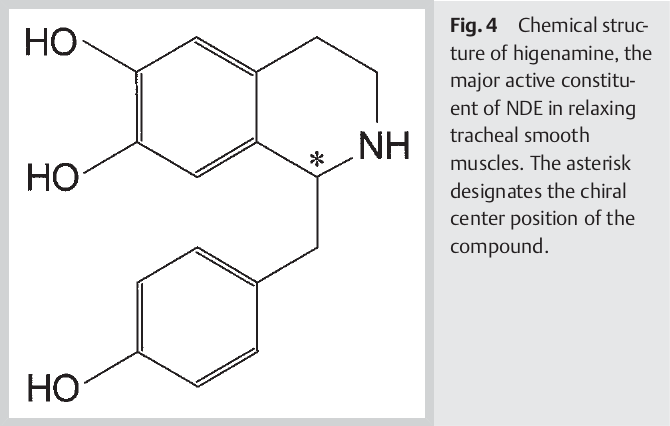
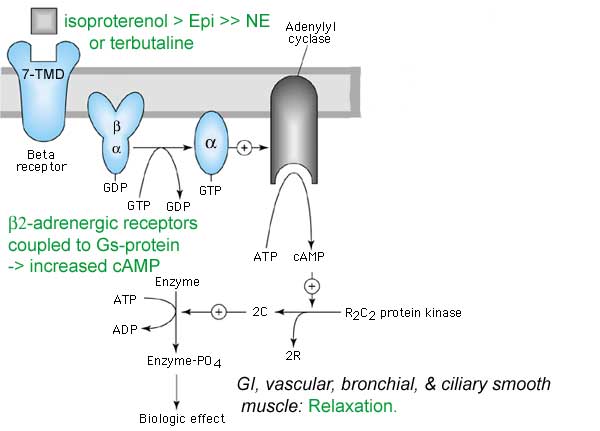


Comments and Discussion (Powered by the PricePlow Forum)